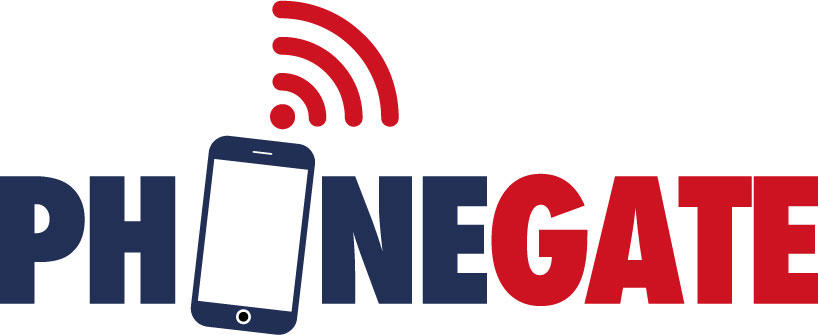
Press release Saturday May 29, 2021
Our work of analysis, bibliographical research and putting into perspective the scientific elements presented, leads us to take a detailed critical look at this new ANSES report on 5G. In our opinion, it is more of a report on policy than a scientific report!
In order to understand why we are able to denounce the falsely reassuring communication around the release of the report, we invite you to read our comments and proposals in a joint document of counter-expertise of 52 pages that will be submitted to ANSES in the context of the public consultation that ends on June 1:
- The various requests for a moratorium before the implementation of 5G, including the one signed in 2017 by more than 170 international experts and doctors including Prof. Dominique Belpomme and Dr. Marc Arazi, already justified by the lack of scientific studies specific to these new frequencies, are fully validated by this report by ANSES. However, although the agency acknowledges the lack of scientific data throughout the 241 pages, it does not draw the necessary conclusions. By acting in this way, ANSES, and also ANFR, which was involved in the work, is clearly and deliberately putting both the people living near relay antennas and mobile phone users at risk, relegating them to the status of guinea pigs.
> We recall the need for a moratorium at national and European level
- This report demonstrates a total disproportion between the resources allocated to scientific studies on 5G and the hundreds of billions spent by manufacturers and operators to market these new frequencies. In France, we see the same imbalance between the sale of frequencies for nearly 3 billion euros to operators and a few hundred thousand euros reallocated by the public authorities for the protection of the population. This is even more obvious at European level through the European Commission’s funding.
> The resources allocated by the State to independent scientific studies must be increased in line with public health issues.
- The choice of ANSES to align itself without any reservations with the ICNIRP recommendations corresponds, in our opinion, to a political takeover of the agency by the supervisory ministries under the influence of the mobile phone industry lobby. Thus this report marks a very notable departure from its own previous, rather courageous reports of 2016 and 2019 (totally absent here) which allowed the Phonegate scandal to be revealed and thus highlighted certain elements of the overexposure of users to the radio waves of their mobile phones due to the serious failings of the ICNIRP standards in terms of protecting users’ health.
> ANSES must have the independence to critically review ICNIRP’s recommendations and the conflicts of interest surrounding them.
- One of the fundamental consequences of this alignment with ICNIRP is to recognize only the thermal effects of radio waves. This completely ignores all the independent scientific studies reporting non-thermal effects. The fact that at this stage there is no official consensus does not mean that ANSES should not take these possible health effects into account.
> In a context of scientific doubt, ANSES must ask the public authorities to apply the precautionary principle.
- Considering the thermal effects of radio waves and their scientific consensus, ANSES, turning its back on its own recommendations (2016, 2019) concerning the poor quality of the SAR (Specific Absorption Rate) indicator for measuring the real exposure of mobile phone users, never took into account in this report their non-application by the French and European public authorities. The agency merely recalled on numerous occasions the need to stay below the regulatory limit values.
> ANSES must bring this report into line with its previous recommendations and report on health risks beyond regulatory values
- Even more worrying, ANSES tells us that there are almost no studies measuring local exposure and absorption levels to radio waves from the new mobile phones. This is also the case for ANFR, which has not published anything to date on exposure measurements for 5G mobile phones. Moreover, neither agency mentions the current impossibility of accurately measuring SAR levels resulting from the simultaneous emission of several antennas of different frequencies included in the new 5G mobile phones. This is even more true for the upcoming cohabitation of SAR and power density indicators in true 5G (24-26 GHz) smartphones.
> ANSES and ANFR must clarify these points as soon as possible in full transparency and hold the public authorities accountable
- Concerning exposure in the frequencies above 24 GHz, neither ANFR nor ANSES has really taken into account future developments concerning the need to increase the number of local micro-antennas (e.g. in a stadium, an office, a street) with the consequence of overexposure of not only people but also all living organisms. This report gives a series of information about the exposure levels of the population that do not correspond to reality, with the sole purpose of underestimating them and providing reassurance to allow the deployment of 5G. It does not address the issue of electrohypersensitivity, thereby omitting its 2018 report.
> There is therefore an urgent need to be able to measure these new sources of exposure which are located at the border between near and far sources and for which no reliable method is known.
- The ANSES referral letter (2019) did not take into account the possible environmental damage linked to general exposure to 5G, and this concerns plants, insects, and living organisms as a whole. And this report says almost nothing about this, just as it does not take into account the associated risks or the co-factors potentiating the deleterious effects of radiofrequencies on humans and nature or the consequences on global warming.
> ANSES, and through it the public authorities, has a responsibility to protect nature and prevent risks to biodiversity and the climate.
- The choices made in the selection of articles or studies in the bibliography and their interpretation by the members of the expert committee demonstrate, in our opinion, a policy rather than a scientific approach in order to allow the government to continue the development of 5G. In doing so, ANSES has turned its back on science. It has deliberately eliminated from its demonstration all the scientific and medical work showing the effects of millimeter waves, whether on health (pain treatment, cardiovascular disorders, diabetes, dermatitis, gastric ulcers, bronchial asthma, infantile cerebral diplegia, cancer, etc.) or on their use in a military context as non-lethal or lethal weapons.
> ANSES must review its entire work on the health consequences of 5G waves, in order to take into account our remarks, those of the ECERI working group and the various contributions that will certainly raise these points
In view of the final report, we ask ANSES to submit the final work, during a contradictory public debate, to a group of international experts independent of any conflict of interest and recognized for their competence in the field of radiofrequency waves. This is the only way to restore confidence between all parties and, most importantly, with the general public.
Access to our analysis report on Anses study Analysis of 5G ANSES report by AP and RdTRobin des Toits is an association according to the law of 1901, founded in 2004 focused on the health, environmental and societal impact of technologies emitting artificial electromagnetic waves, which has a privileged relationship with the public and has developed its expertise in the health, technical, legal and societal domains.Le contenu va ici






